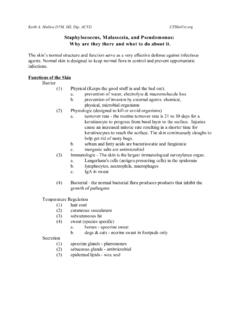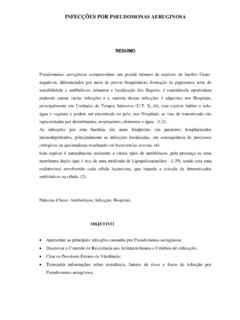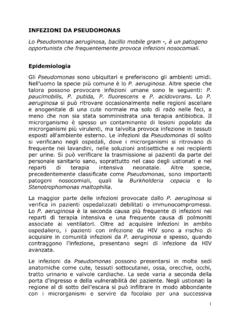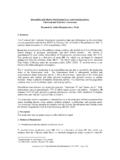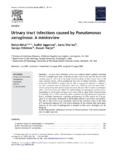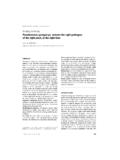Transcription of Isolation and characterization of lipolytic Pseudomonas ...
1 IOSR Journal of Biotechnology and Biochemistry (IOSR-JBB) ISSN: 2455-264X, Volume 1, Issue 6 (Sep. Oct. 2015), PP 33-36 Isolation and characterization of lipolytic Pseudomonas spp. from oil contaminated water samples Vivek S. Vishwe1*, Shrikant P. Gajbhiye1, Shashikant P. Vaidya2, and Abhay S. Chowdhary 1(Department of Bacteriology, Haffkine Institute for Training, Research and Testing, Parel, Mumbai 400 012, India) 2(Department of Clinical Pathology, Haffkine Institute for Training, Research and Testing, Parel, Mumbai 400 012, India) Abstract: Oil contaminated water samples collected from different areas in Pune were screened for the selective Isolation of lipolytic Pseudomonas spp.
2 Screening medium containing Tributyrin (1% v/v) and Rhodamine B was used for the specific Isolation of lipolytic Pseudomonas spp. from oil contaminated water samples. lipolytic bacteria showing zone of clearance around the colonies were selected for the present study. Isolated bacteria were identified upto genus level with the help of morphological and biochemical testing by following Bergey s manual. Spectrophotometric Lipase assay showed that out of 49 lipolytic Pseudomonas spp., WP23 exhibits the maximum Lipase activity of about U/ml.
3 Keywords: Biochemical tests, Lipase, Rhodamine B, Spectrophotometric assay, Tributyrin. I. Introduction Lipases (triacylglycerol acylhydrolases, EC ) are enzymes having a biological function of catalyzing the hydrolysis of triacylglycerols [1]. Lipase catalyzes the hydrolysis of triacylglycerols into a diacylglycerols, monoacylglycerols, glycerols and fatty acids at water-lipid interface [2,3]. In non-aqueous environment, Lipases can also catalyze ester synthesis [3,4]. Lipases are one of the most important enzymes that are used in various industries like Detergent, Food, Leather, Textiles, Pharmaceuticals, etc [4,5].
4 Bacterial Lipases are the enzymes with tremendous demand due to their potential industrial applications & stability. Although Lipase enzyme was isolated and purified from fungi, bacteria, yeast, animal and plant sources, but of all these bacterial Lipases are considerably commercially important and physiologically significant [6]. Among various Gram positive and Gram negative bacteria, the Pseudomonas spp. remain considerably less explored for the purpose of Lipase production. Hence the present study mainly focuses on the selective Isolation of lipolytic Pseudomonas spp.
5 From various oil contaminated water samples. II. Materials And Methods Collection of oil contaminated water samples Water samples mainly collected from oil contaminated sites like sewage treatment plants, riverside, bus stand-railway car shed, car-bike servicing and washing centers, etc. situated in and around Pune region were used in the present study for the Isolation of lipolytic bacteria. Sterile containers were used for the collection of oil contaminated water samples. Then these samples were transferred to the laboratory for further analysis [7,8].
6 In the present study, total 14 oil contaminated water samples were collected and screened for the presence of lipolytic Pseudomonas spp. lipolytic bacteria Isolation Selective Isolation of lipolytic bacteria from oil contaminated water samples were performed by using Tributyrin agar medium containing Rhodamine B. Pour plate method was used for the screening of water samples for Isolation of lipolytic bacteria. Tributyrin Agar base medium containing Rhodamine B consists of components like tributyrin 1%(v/v), yeast extract (w/v), peptic digest of animal tissue (w/v), Rhodamine B (w/v) & agar (w/v).
7 Petriplates were then incubated for about 24 - 48 hours in an incubator at an incubation temperature of 370C. After incubation, lipolytic bacterial colonies showing a clear zone of inhibition of tributyrin around the edges of the colonies were selected for the further studies [9,10,11,12]. 33 | Page Isolation and characterization of lipolytic Pseudomonas spp. from oil contaminated water samples Screening of lipolytic isolates After completion of 24 - 48 hours of incubation, lipolytic bacteria which are Gram negative, rod shaped and motile in nature were selected for the present studies.
8 Microbiological screening of isolated lipolytic bacteria was performed by four quadrant streaking method on Tributyrin agar plates containing Rhodamine B. These plates were then incubated at 370C for 24 - 48 hours. After incubation, these plates were checked for the appearance of zone of inhibition around the bacterial colonies [13,14]. Isolated pure cultures of lipolytic bacteria were maintained in the form of glycerol stock preparations at -200C for purpose of preservation. Biochemical characterization of the isolates Identification of isolated lipolytic bacteria upto genus level was performed with the help of morphological and different biochemical characteristics.
9 Gram s nature, bacterial colony characters, and motility of the organism were studied for morphological analysis while different tests like Indole test, Nitrate reduction test, Catalase test, Oxidase test along with carbohydrate / sugar fermentation were performed for analysis of biochemical characters of isolated lipolytic bacteria. With the help of morphological and biochemical characteristics along with Bergey s manual of Systematic Bacteriology, genus level identification of isolated lipolytic bacteria was performed [15,16].
10 Lipase assay Extracellular Lipase activity was measured using polyoxyethylene sorbitan ester (Tween 80) as substrate by the method described by Tirunarayanan and Lundbeck with slight modifications. Tween 80 is the ester of oleic acid. Briefly, the reaction mixture contains of 10% Tween 80 in 50mM Tris hydrochloride buffer (pH ), of concentrated culture supernatant as a source of enzyme, of 1M CaCl2 in Tris buffer, and of Tris buffer (pH ). Reaction mixture with of deionized water instead of supernatant was considered as a blank.










